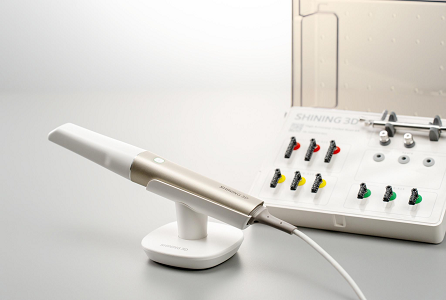In recent years, intraoral scanners in dentistry have gained significant traction, becoming an essential tool in many dental practices. The adoption of digital technology has streamlined numerous dental procedures, and intraoral scanners play a critical role in this transition. SHINING 3D DENTAL’s intraoral scanners are at the forefront of this technological evolution, offering improved precision, faster workflows, and enhanced patient comfort. This article examines why intraoral scanners in dentistry are becoming a standard practice and how their integration is improving both the clinical experience and overall efficiency.

The Shift from Traditional Impressions to Digital Scanning
Traditionally, dental impressions involved the use of messy materials like alginate or silicone to create molds of a patient’s teeth. This process, while effective, often led to discomfort for the patient and presented challenges in terms of accuracy and consistency. Moreover, the need to send physical impressions to dental labs added time and complexity to the procedure.
With the advent of intraoral scanners in dentistry, this process has been simplified. SHINING 3D DENTAL‘s intraoral scanners capture highly detailed, accurate digital impressions of the patient’s teeth in real time. This shift from physical to digital impressions offers a more comfortable and efficient experience for both the patient and dental professionals.
Streamlining Workflow and Reducing Turnaround Time
One of the primary reasons intraoral scanners in dentistry have become more widespread is their ability to streamline workflows. Digital impressions eliminate the need for physical molds, which can be time-consuming and prone to errors. With intraoral scanners, the scanning process is faster, more accurate, and produces immediate results.
For dental practices, this means reduced chair time for patients and faster processing of data. Once the scan is complete, it can be quickly sent to the dental lab for further processing. The integration of cloud-based platforms allows for real-time data sharing, ensuring that the dental lab receives the most accurate and up-to-date information without any delays. This faster workflow reduces the turnaround time for crowns, bridges, and other restorations, enabling dental professionals to provide quicker, more efficient care.
Enhancing Patient Comfort and Satisfaction
The traditional impression process can often cause discomfort, especially for patients with a sensitive gag reflex. With intraoral scanners, the process is completely digital and requires no physical materials to be placed in the patient’s mouth. This results in a more comfortable experience, which can be a significant selling point for both new and existing patients.
Patients also appreciate the speed of the scanning process. The quick and accurate digital impressions allow for a more relaxed dental visit, enhancing the overall patient experience. This increased comfort level can lead to higher patient satisfaction and encourage repeat visits, benefiting the clinic’s reputation and patient retention.
Improving Accuracy and Reducing Errors
One of the most significant advantages of using intraoral scanners in dentistry is the high level of accuracy they offer. Traditional impressions are susceptible to various errors, including distortion, incomplete molds, and imperfections caused by the patient’s movement or the material itself. Digital impressions, however, are captured with high precision, ensuring that the final restoration is an accurate representation of the patient’s teeth.
This improved accuracy reduces the likelihood of having to remake restorations due to fitting issues, ultimately saving both time and resources. For dental labs, this means fewer adjustments and corrections, leading to smoother workflows and better-quality outcomes.
Conclusion
The increasing use of intraoral scanners in dentistry is not just a passing trend, but a shift toward more efficient, comfortable, and accurate dental care. SHINING 3D DENTAL’s intraoral scanners are helping dental practices and labs improve workflows, enhance patient comfort, and reduce errors. As the dental industry continues to embrace digital technology, intraoral scanners will undoubtedly become a standard tool in everyday dental practice. By adopting this technology, dental businesses can stay competitive, improve service quality, and deliver superior care to patients.
 ENG
ENG








